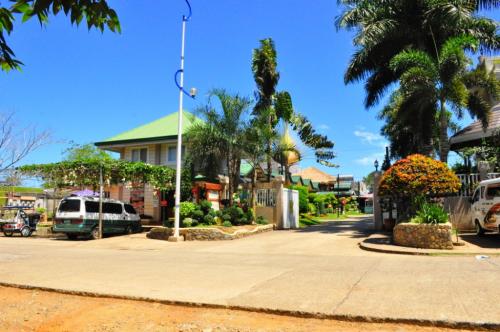
Romblon consists of numerous islands sitting in the Sibuyan Sea. It lies south of Marinduque and Quezon, east of Mindoro, north of Aklan, and west of Masbate. The three major islands are Romblon Island, Tablas Island, and Sibuyan Island.
Â
People and Culture
Languages. There are three distinct languages spoken as a native language by Romblon's inhabitants; they are Romblomanon, Asi, and Onhan. Hiligaynon, Tagalog, and English are also used depending on the situation.
Religion. The people of the province are mostly Christians- 75% belongs to the Roman Catholic and 25% to the Philippine Independent Church, Iglesia ni Cristo, Seventh-day Adventist Church, Baptists, Church of the Foursquare Gospel in the Philippines and other Christian denominations.
Heritage. Most of the residents of Romblon today are descendants of Malay settlers, who are believed to have arrived in the Philippines sometime in 1200 AD. Spanish conquistadors, who set foot in the Philippines in 1582, administered the province. Some old Spanish forts and churches, built with unique coral blocks, inlaid with intricate design works, still stand.
Economy
Situated at the center of the archipelego, Romblon links the supply areas of Luzon, Visayas and Mindanao. Tugdan Airport in Tablas Island is only 45 minutes away by light aircraft from Metro Manila's Financial districts. Direct ship routes from Manila as well as the southern Luzon ports of Batangas and Lucena intensify its linkages with industrial CALABARZON region, making the province an ideal location for supply distribution and light manufacturing ventures. The Capital town of Romblon and the port town of Odiongan are the province's trade and commercial centers.
Geography
Approximately 187 nautical miles (346 km) south of Manila, the islands of Romblon lie on Sibuyan Sea, South of Marinduque Island and North of Panay. To the east is the island of Masbate and in the west is Mindoro.
Natural Resources
Romblon is endowed with lush vegetation and mineral resources. Aside from marble, the islands are rich in granite, nickel, silica, mercury, zinc, copper, silver, limestone, sulfide, ores, kaolin, clay, magnesium and quartz. Gold panning sites have sprouted in some of the mountain stream areas in Magdiwang, Sibuyan Island. The fertile soil nurtures varied agricultural crops--like coconut, rice, corn, bananas, rootcrops, fruit trees, vines and many others. Offshore, Romblon is a rich fishing ground. The islands lie on the migratory path of fishes from the Sulu and Visayan Seas, passing the Tablas Strait, Sibuyan Sea and Romblon Pass.
Political
Romblon is subdivided into 17 municipalities.
Municipalities
* Alcantara
* Banton
* Cajidiocan
* Calatrava
* Concepcion
* Corcuera
* Ferrol
* Looc
* Magdiwang
* Odiongan
* Romblon
* San Agustin
* San Andres
* San Fernando
* San Jose
* Santa Fe
* Santa Maria (Imelda)
History
The province of Romblon was formerly called Lomlon (an act of a hen nesting to warm her eggs, based on the fact that when a Spanish soldier was ordered to ask the natives the name of the island and accidentally pointed to a place where a hen is nesting, the native answered lomlom, hence the misinterpretation) and later corrupted to the word Domblon. It was organized by the Spanish into a politico-military district in 1853 and made a sub-province of Capiz. In 1917, it was converted into a separate province. In October 1, 1946, Romblon was made into a special province with four municipalities, namely Tablas, Romblon, Sibuyan and Maghali. On January 1, 1947, the regular provincial status of Romblon was restored.
Romblon's early inhabitants were the Negritos from Panay and Mangyan tribes from Mindoro. Ancient hanging coffins and aboriginal artwork was discovered in caves of Banton Island signify a rich ancient civilization and culture.
Source: